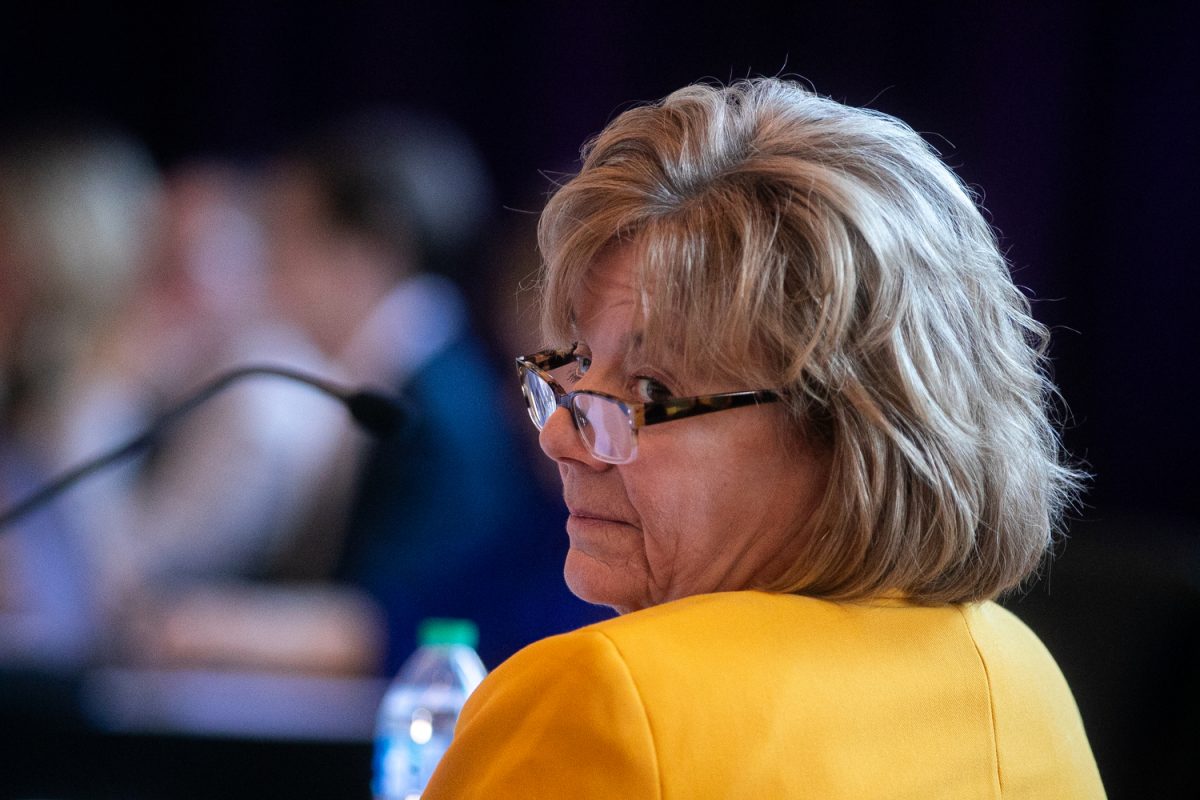Sheila Baldwin said there was a time when no one knew what he or she was getting into.
As one of the first UI Dance Marathon executive-committee members, she said, it was difficult to find participants to pledge to dance for the original 36-hour span.
“Many dancers considered quitting in the first few hours of the event,” Baldwin wrote in an e-mail. “But as the weekend went on, a certain kind of magic began to develop … It was truly unbelievable.”
Her involvement in Dance Marathon hasn’t ended since the group’s 1995 birth. The 34-year-old serves as the UI Foundation’s executive director of development for the UI Children’s Hospitals, and she is an acting liaison to Dance Marathon.
Baldwin helped create Dance Marathon in her first year of college after coming to the UI looking for an activity that she was passionate about. After fighting pediatric cancer at the UI Hospital and Clinics for six years, Baldwin couldn’t think of a better event to get involved in than Dance Marathon.
It was perfect timing — Baldwin came to the UI the same year as students were organizing Dance Marathon.
In 1994, the national Children’s Miracle Network approached the UI about becoming one of its first campus-based fundraising events.
At the same time, Mary Peterson, then an adviser in the Office of Student Life, had been in contact with a colleague from the Penn State Dance Marathon, THON — which had just celebrated 20 years of success.
Working on Penn State’s model, Peterson and staff from the local Children’s Miracle Network began planning for the first UI Dance Marathon.
After one year of organizing, the first-ever “Big Event” was held in April 1995. The event spanned 36 hours, raised $31,000, and supported 26 pediatric cancer patient families, Baldwin said.
Since 2008, the event has raised at least $1 million annually, and it draws thousands of dancers, volunteers, and supporters, she said.
To date, the group has raised more than $7.5 million. Around 2,000 volunteer dancers participated in last year’s “Big Event.”
No one involved with the initial planning expected the event’s explosive growth.
“The first year, we were just concerned about having anyone left in the room when the event ended,” Baldwin said. “We could have never imagined that regulations would need to be placed on the number of participants and visitors due to fire code.”
Mary Schlapkohl, an advanced registered nurse practitioner in the pediatric oncology unit, said the UI Hospitals and Clinics staff were also shocked by the outpouring of participation and donations.
“I thought it would be this kind of funny event that would raise a little bit of money,” the 48-year-old said. “I had no idea, no vision it was going to be so important to our families and division. It’s crazy.”
The size of the event continues to transform over time, but the organization’s purpose to provide both financial and emotional support for cancer patients and their families hasn’t changed.
Adam Blind, a former dancer and current board member for the Dance Marathon alumni group, said the families will always be the focus of the event.
“The money is great, but it’s everything else that goes with it that they appreciate the most,” he said. “It’s the hospital visits and different trips they enjoy the most; it’s another layer of patient care.”






